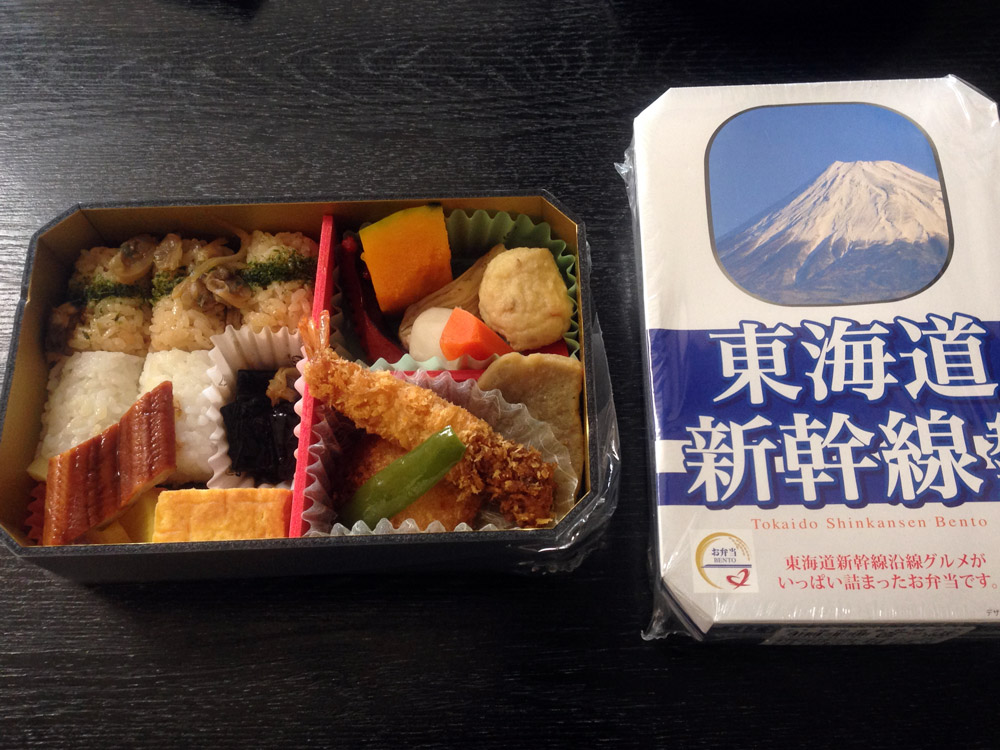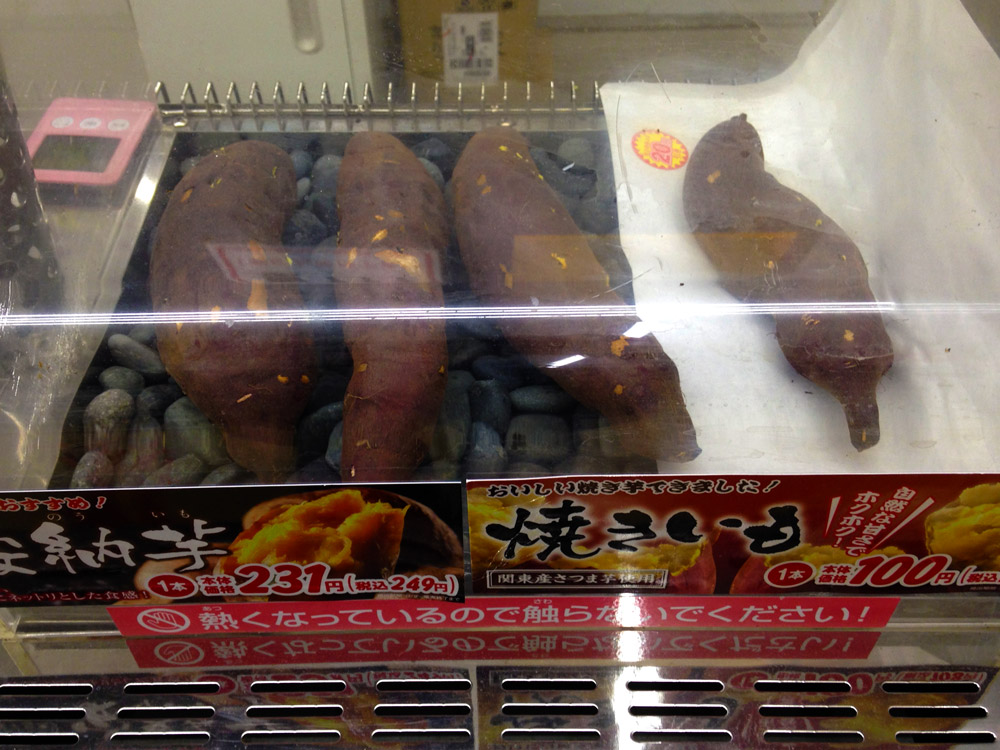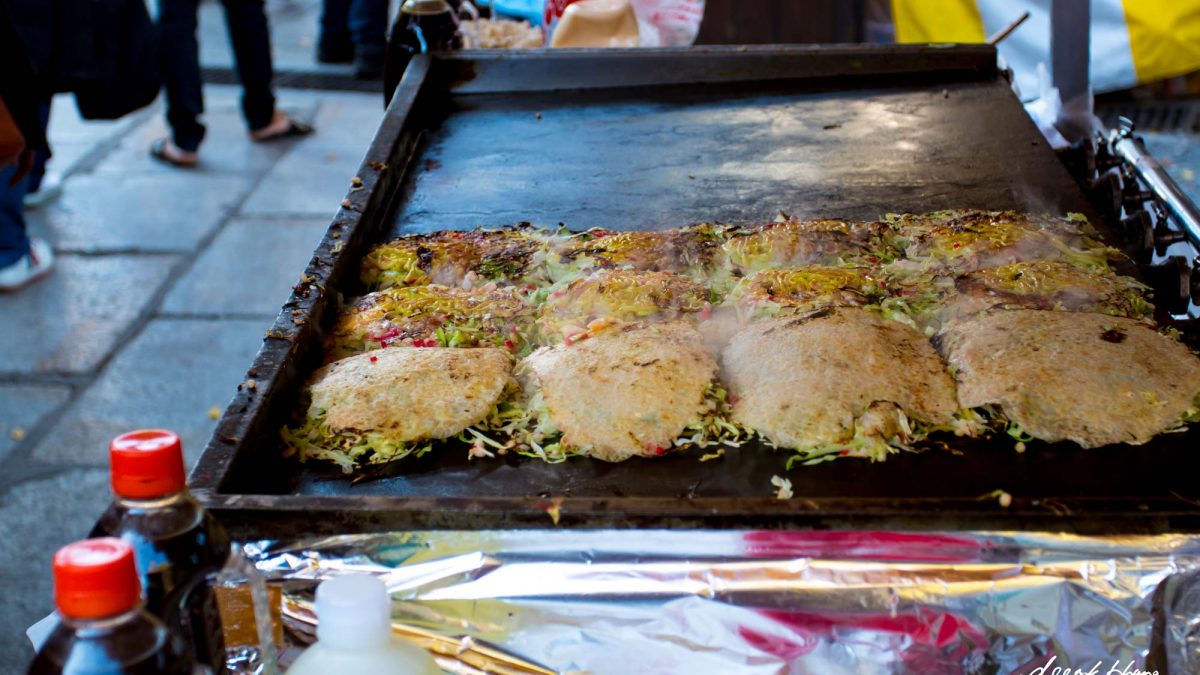Ok, so I’m going to assume you’re a vegetarian. In our family, we aren’t – but personal dietary restrictions, both religious and otherwise, can be quite wide-ranging even in the same household. Always something to consider when travelling.
I eat pretty much everything you would find in your local supermarket, and will try the more exotic fare when we travel.
The kids eat everything except beef and pork, due to religious reasons – I’m sure they love the aroma of fresh bacon sizzling in the morning especially when we go camping, but for now it’s off limits. They can make the decision when they get older.
K eats seafood, poultry and eggs. She doesn’t eat any red meat – and this is where it starts to get tricky in a place like Japan, and it led us to think about how our vegetarian friends would fare in the land of the rising sun.
What does ‘vegetarian’ mean in Japan, anyway?
Well you know what it means, because you are one.
But when you travel, don’t expect the same definition. In a country like Japan with a rich culinary culture filled with variety, plus a reputation for top quality seafood in sushi and sashimi, a crazy dedication to meat that has resulted in famous Kobe beef and Wagyu, (not to mention traditions sadly associated with whale and dolphin meat, among others) you cannot expect a widespread understanding of vegetarianism.
From our experience, when your server does not speak much English, and you speak even less Japanese, your word for ‘vegetarian’ quickly changes to one for ‘vegetables’ and the response is polite and welcome nodding. ‘Vegetarian’ was taken to mean ‘we want some vegetables in it’ and when we received our meal, it smelled fantastic and also something in there which looked like seafood.
Luckily, not such a problem for my family.
So as a vegetarian we advise you would be better off ensuring you master the correct Japanese for “I am a vegetarian, I don’t eat any meat” and remember to smile and be polite!
When in doubt…?
You might be right to suspect what could be in the secondary ingredients of your dish.
Delicious soba noodles are a must-eat in Kyoto, and because we don’t eat meat every day, we would often order them with vegetables. Soba are a delectably firm noodle made from buckwheat flour and are served either hot or cold; and I prefer hot because the broths/soups for me make soba such great comfort food.
But we don’t know what minor ingredients are used to make every stock or soup, even those on a vegetarian menu, and we Iack the Japanese language skills to ask the question. If a traditional dashi stock is used, this is fish-based. If you’re a vegetarian, do you just eat it, accept that it doesn’t taste meaty (you may or may not recognise this!) and have a warm, happy-tummy meal?
Or do you play it super-safe and just have those noodles plain (and pretty bland)?
Our approach was to assume the positive rather than the opposite. If we ordered the vegetarian noodles on the menu, then the chance it contains traces of meat is the same chance that would exist in any vegetarian meal from a mixed menu restaurant, anywhere in the world. But since we eat fish, a dashi stock is less of a concern.
There is no clear-cut solution to this one – but don’t necessarily assume the worst just because you’re away from home.
Japanese dishes you’re likely to find on your menu, so feel better:
Tempura everything.
Ah, the light batter of tempura bringing the crunch to healthy veg (as long as you don’t mind deep fried food!) While some tempura-friendly vegetables like sweet potato or squash/pumpkin are widely available the world over, others like lotus root are great new tastes to explore while in Japan. And you’ll probably come across broccoli, green beans… the list goes on.
Mushrooms.
Japan has a love affair with mushrooms, and they don’t all have to be the Shiitake variety which i personally find an acquired taste.
Tofu.
The trusty bean curd that tastes like nothing, but goes with everything. Made a multitude of ways, healthy and crying out for the love of a good soy sauce.
Veg-filled gyoza.
Beautiful dumplings – remember, gyoza doesn’t have to always to be about the pork.
Edamame.
Green soy beans, lightly salty and particularly good with a beer along with tofu skewers in a Yakitori bar, while your fellow travellers are enjoying their chicken versions.
Salads.
Though they are small side dishes, Japanese salads are fresh and variety is plentiful. And Japanese dressings lift these to the next level.
Veggie korokke (croquettes) – deep fried, potato-filled, crunchy love.
Fish on the side
Also remember, traditional meals and travel options like bento boxes also come with all the portions within the meal cleanly separated, so when you’re stuck for a vegetarian answer, you might be able to ignore the fish and just enjoy the rice, pickles, croquettes and salad. (Grab a bento from the platform shop when you’re catching the Shinkansen bullet train, whether you’re hungry or not, it’s a must-do.)

Let’s talk about eggs
We have to talk about eggs, because I have to talk about Okonomiyaki. (happily sizzling away in the main image)
Okonomiyaki is one of my favourite Japanese dishes. This isn’t a recipe, and multiple variations exist, but the hotplate-fried pancake-style goodness we had was packed with: noodles, cabbage, scrambled egg, spring onion and topped with Japanese kewpie mayo and a dark sauce that puts bbq sauce to shame.
Yes, it can also be made with seafood, pork or similar, but you can avoid these.
If you’re strict about fish products, ask not to include the bonito flakes which are scattered feather-light on top.
We found this a great meal when we had over indulged on other goodies and needed some humble food packed with flavour, but also healthy in terms of protein and vegetable fibre.
I have heard there are non-egg versions of this deliciously homely dish, but we didn’t come across it – if you have, feel free to comment and let me know.

Got kids?
Don’t forget the snacks!
Whenever we couldn’t find food options in a hurry and ours got that hungry vibe, our go-to were nut bars – they store well and deliver a hit of nutritious energy with no sugar rush! Which buys you time to get them to the proper meal.
It’s not all about the food (I can’t believe I just said that)
Don’t let being vegetarian keep you from visiting this country known for it’s meat and seafood dishes. The modern and traditional culture, and the human-made and natural wonders of Japan, will give you more than enough reason to have a great time.
Don’t miss out on any spectacular nightlife because you’ve spent hours walking around restaurants looking for one that serves something pure-veg that you haven’t already tried on your trip.
It’s not a big deal to plan ahead to make sure you aren’t left wanting for vegetarian food, or live on healthy snacks for a bit longer (there’s pretty much a convenience store around every city corner!).


Ryokan (guest-house) style
If you’re staying in a traditional Ryokan, and your Japanese (or Google translate) is up to it, why not try to request full-vegetarian meals for the duration of your stay. You might even be able to do this before you book.
Non-Japanese meals?
I don’t want to tell you to default to western meals – but hey, this is modern Japan, and in the larger cities, everything from fast-food chains to Italian and Indian restaurants can be found with reach, if you do a little research.
Beer.
Never forget: beer is vegetarian. And Japan has great beer!
Know any delicious, unmissable vegetarian options in Japan? You can share them in the comments below. Happy travels!
TRAVEL LOVE IS FOR EVERY DAY. LIKE TODAY!
This site is about being inspired by what’s real out there, on journeys that matter to you.
We’re a normal working family, not endless wayfarers or travel agents! We love exploring; in our daily daydreams, and on our trips.
Maybe you’re a ‘todayfarer’ too.
Recent
- Carnarvon Gorge with kids – 7 reasons some people don’t visit, but you should
- VIDEO: Glimpses of authentic Morocco travel
- Moroccan food you’ll always remember: Our 6 best
- Visiting Morocco with kids! 12 important things they don’t tell you (part 2)
- Visiting Morocco with kids! 12 important things they don’t tell you (part 1)



